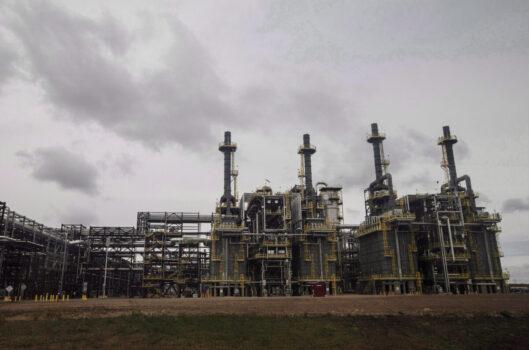Canadian workers may be heading toward a slower rise in income and living standards unless public policy steps in to help, as an analysis of Canada’s business investment per worker since the 1990s shows signs of a “troubling outlook,” suggests a report by the C.D. Howe Institute.
“Declining Vital Signs: Canada’s Investment Crisis” examines recent figures on Canada’s stock of capital per worker and new investment and makes comparisons with the situations in the United States and other Organisation for Economic Co-operation and Development (OECD) countries.
“Investment matters for individual workers and job-seekers,” stated the report authored by C.D. Howe CEO William Robson and research assistant Miles Wu, released Sept. 16.
“Every time a business decides to expand a distribution centre, buy an excavator or a computer, or upgrade its contact-management database ... their ability to compete and pay higher wages improves.”
But this investment is lagging in Canada, the report said.“New business investment per worker is declining. Not only have areas of traditional strength in Canadian business investment—non-residential and engineering structures—fallen in recent years, but the categories most associated with innovation and future productivity—machinery and equipment (M&E) and intellectual property (IP) products—are weaker yet.”
Robson and Wu argue that investment in those three core areas of economic growth will boost activities, which in turn spur productivity as workers increase their output, thus leading to higher incomes. They cited economic analyses in support of the idea that “capital accumulation is a key driver of economic growth.”
“The buildings where people work, the infrastructure that moves products and services, the tools workers use on the job and the intellectual property that drives innovation and productivity all raise living standards over time,” they wrote.
The problem is that since 2015, Canada’s stocks of capital per worker have either been stagnant or declining, the report said. Rates of gross investment per worker have also been weak. Moreover, business investment has been “feeble” compared to that in the United States and other countries and appears to have worsened during the COVID-19 pandemic.
The authors calculated that, across the three core areas, the investment in real terms per worker was about $11,200 in the second quarter of 2021—down from a peak of $15,800 in 2014 and “barely above their trough in the financial crisis and recession of 2008–2009,” based on data tracked by Statistics Canada and other national statistical agencies since 1990.
Comparing the latest numbers in 2021 with those of Canada’s southern neighbour, the new investment per Canadian worker was “only about 50 cents for every dollar of investment per potential worker in the United States,” the report said, and “about 58 cents per potential worker in the OECD countries generally.”

Of particular concern is Canada’s energy sector, which thrived until 2014 and has struggled since 2015. The report said workers in oil and gas extraction, the part of the energy sector most affected since 2015, received “barely more than half as much” investment in 2020 compared to their U.S. counterparts—around 52 cents per worker—while they received “almost as much” at the peak in 2016, about 94 cents.
But the authors cautioned against pursuing higher investment rates in their own right. They reasoned that spurring investment in non-economic assets with subsidies or regulation could defeat the purpose, as they increase capital spending but lower productivity and future incomes.
One concern surrounding the declining numbers is that they suggest Canadian businesses are not seeing the opportunities and threats facing them or are not responding to them, and therefore not undertaking productivity-improving capital projects that could actually help them, the report said.
The authors argued that although the 2021 federal budget promised “sustained faster output growth,” its measures are heavily focused on transfer payments and direct federal consumption spending, which could impede productivity, business investment, and the country’s future capacity to generate goods and services.
Among reasons for the weak business investment in Canada are the stringent pandemic lockdowns; inadequate infrastructure, particularly in energy transportation; tax structures; and rates unfavourable to capital projects, said the report. Businesses also face trade uncertainty, “unnecessarily heavy” regulations, and policies that favour residential housing over other kinds of investment.
Small and medium-sized businesses also face obstacles getting financing, and federal policies in telecommunications and pharmaceuticals prioritize “short-term benefits for current consumers over the long-term benefits of investment and higher output.”
“The mutually reinforcing nature of productivity and investment mean that Canada’s low investment rates are both a symptom of lower productivity than we should aspire to and signs that future productivity will be lower than we want,” Robson and Wu warned.
But they said the trend can be reversed if public policies are put in place that boost business’s desire to invest.
“Productivity-enhancing competition, and measures that increase the supply of investment capital, such as tax reforms, can help Canadian workers get more of the tools that will raise their future incomes and living standards,” they wrote.






Friends Read Free